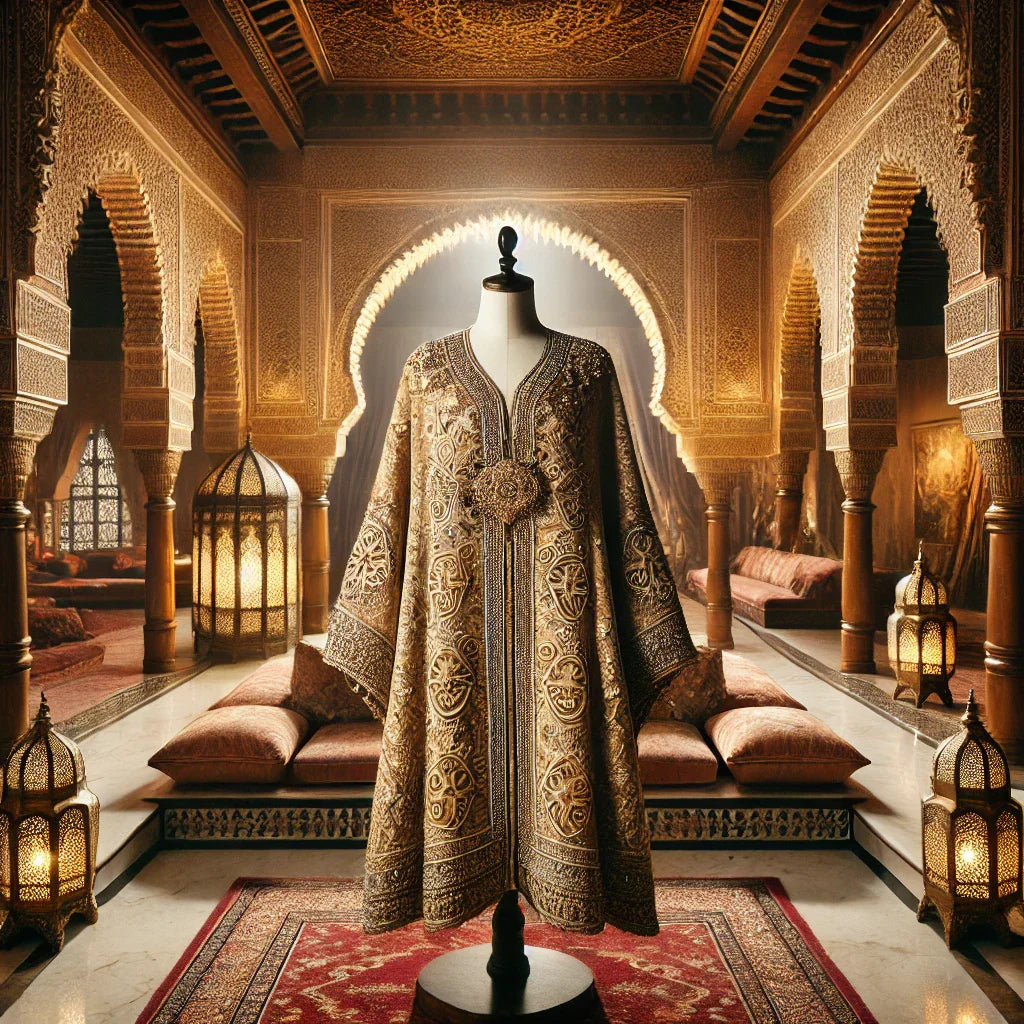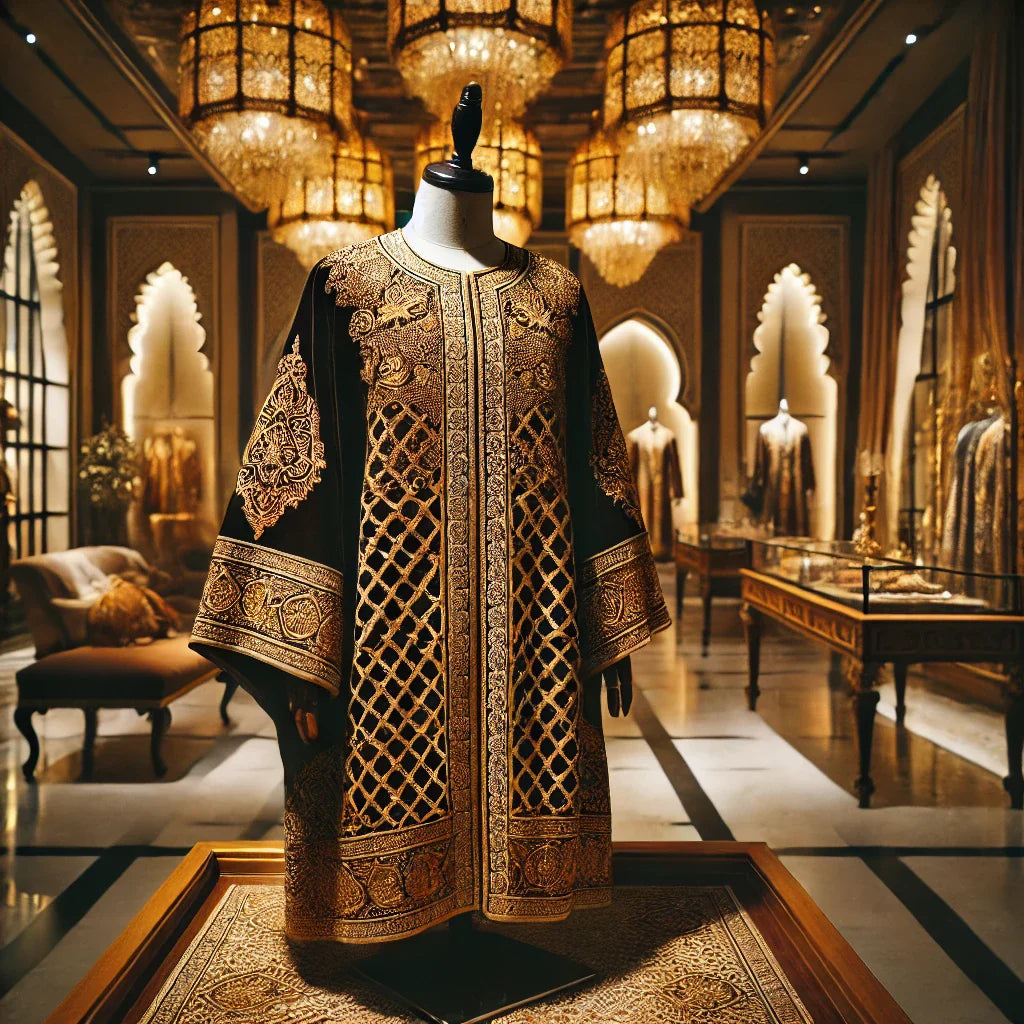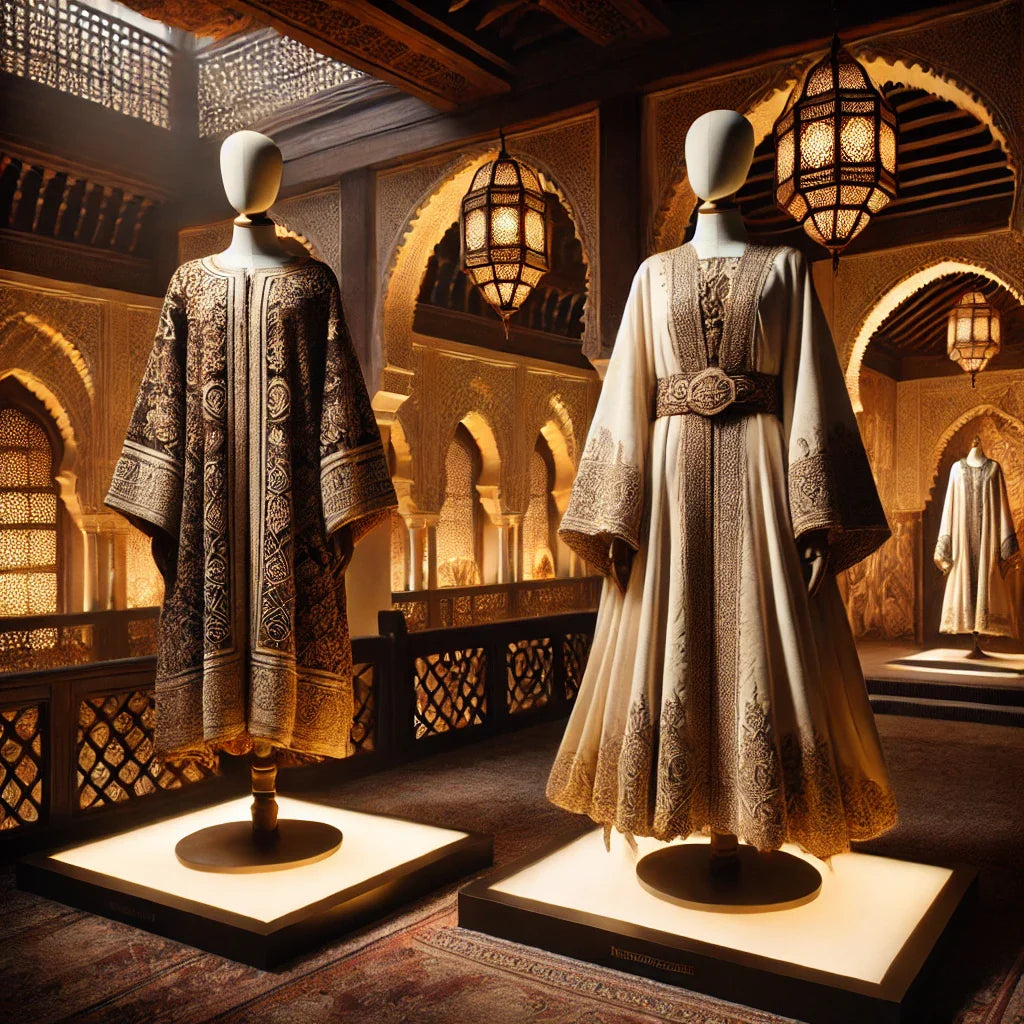
Where does the word caftan come from?
The word "caftan" resonates with elegance, tradition, and refinement. But where does this term, which evokes an iconic garment from the Middle East, actually come from? Throughout history, the caftan has spanned centuries, cultures, and continents to become a staple of traditional and contemporary fashion. This long, flowing, and often richly adorned garment is much more than just a garment: it is the symbol of a powerful cultural heritage.
The caftan has its origins in the ancient Orient and has been adopted by different civilizations over time. From ancient Persia to the Ottoman Empire, including Moroccan dynasties, this attire has undergone a transformation, influencing local fashion and traditions. Today, it is inseparable from major celebrations, especially weddings, where the wedding caftan remains a must-have for women wishing to combine tradition and modernity.
👉 Discover our sumptuous collection of Wedding Caftan and let yourself be seduced by exceptional models!
I. The origins of the word "Caftan"
1. An oriental etymology
The word "caftan" comes from the Persian "khaftan," which refers to a loose-fitting garment worn by elites. Used in the Persian Empire since ancient times, the term spread through conquest and trade, reaching territories as far away as Central Asia, the Maghreb, and Europe.
👉 Find your style with our Wedding Caftan collection!
2. The Ottoman Empire: a decisive turning point
During the Ottoman Empire, the caftan became a prestigious garment reserved for sultans and the nobility. Each caftan was crafted from luxurious fabrics, embroidered with gold and silver thread, and presented as gifts to high-ranking officials.
👉 Treat yourself to a caftan worthy of Ottoman princesses with our Caftan Mariage collection!
3. An expansion towards the Maghreb
It was in the 16th century that the caftan reached North Africa, particularly Morocco, where it became an iconic garment. The Moroccan version, richly embroidered and worn on special occasions, draws inspiration from Ottoman influences while adopting local specificities.
👉 Discover the most beautiful Moroccan caftans in our Wedding Caftan collection!
II. The evolution of the Caftan through the ages
1. From royalty to popular traditions
Once reserved for kings and elites, the caftan has gradually become more popular. Today, it is worn by all women, especially at weddings, religious festivals, and prestigious events.
👉 Enhance your figure with our exclusive Caftan Wedding collection!
2. The caftan in Morocco: a unique know-how
In Morocco, caftan making is a true art, passed down from generation to generation. Every detail is meticulously crafted: embroidery, beads, lace... A Moroccan caftan is a work of art that requires weeks, even months of work.
👉 Find your ideal caftan in our Wedding Caftan collection!
3. The caftan today: between tradition and modernity
Today, the caftan is being modernized while retaining its traditional essence. Designers are competing in ingenuity to offer revisited designs, combining modern cuts with classic embellishments.
👉 Fall for a contemporary style caftan with our Wedding Caftan collection!
III. Why does the Caftan remain a must-have?
1. A timeless and refined garment
The caftan never goes out of style. Whether classic or reimagined, it always embodies elegance and refinement. Women embrace it not only for its aesthetic appeal, but also for its comfort.
👉 Let yourself be seduced by our Wedding Caftan collection!
2. A wedding outfit par excellence
The wedding caftan is a favorite choice for many Moroccan and Middle Eastern brides. It allows for a regal appearance while remaining true to tradition.
👉 Discover the perfect styles for your big day with our Wedding Caftan collection!
3. A symbol of culture and belonging
Wearing a caftan also shows your attachment to a rich heritage. It's a way to celebrate your roots while wearing an exceptional outfit.
👉 Express your heritage with a caftan from our Wedding Caftan collection!



Leave a comment
This site is protected by hCaptcha and the hCaptcha Privacy Policy and Terms of Service apply.